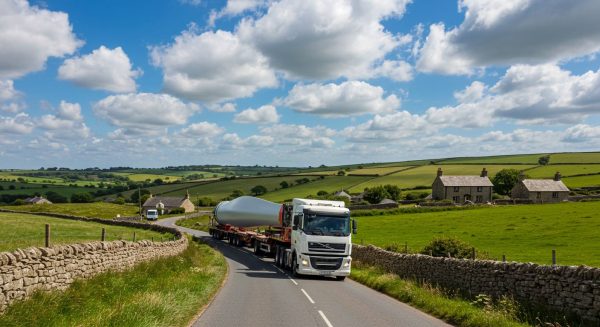Special Types General Order (STGO) vehicles play a vital role in the UK’s transport infrastructure, moving everything from construction machinery to broken-down lorries. These vehicles often exceed standard size and weight limits, requiring special classifications to operate legally and safely on British roads.
Under STGO regulations, vehicles fall into several key categories based on their function and specifications. The primary categories are abnormal indivisible loads (AIL), mobile cranes, engineering plants, and road recovery vehicles.

Abnormal Indivisible Loads
For AIL vehicles, which transport loads that cannot reasonably be divided for transport, there are three distinct categories based on weight. Category 1 vehicles can operate up to 46,000 kg with five axles or 50,000 kg with six axles. Category 2 allows operations up to 80,000 kg, while Category 3 permits weights up to 150,000 kg. Anything above these limits requires a special order from National Highways.
Mobile Cranes
Mobile cranes also have their own classification system. Category A cranes can operate at up to 36,000 kg on four axles; Category B allows higher axle weights of up to 12,500 kg per axle, and Category C permits up to 16,500 kg per axle with a maximum gross weight of 150,000 kg. Think of these categories like a ladder: as you climb up through them, the permitted weights increase, but so do the safety requirements and restrictions.

Engineering Plant
The engineering plant, which includes specialist construction and maintenance vehicles, follows a similar three-tier system to AIL vehicles. However, there’s also a special “slow plant” classification for vehicles with very high axle weights that must operate at reduced speeds—no more than 20 mph on motorways and 12 mph on other roads.
Road Recovery Vehicles
Road recovery vehicles have their own unique classification. These vehicles, purpose-built for recovering broken-down vehicles, can operate at up to 80,000 kg on six or more axles, though they must adhere to strict speed limits of 40 mph on motorways and 30 mph on other roads when carrying or towing a casualty vehicle.
Dimensional Considerations
The classification system also considers dimensions. Any vehicle exceeding 18.75 meters in rigid length or with a total combination length over 25.9 meters requires special notification to authorities. Width is similarly controlled—vehicles over 3 meters wide need police notification, and those over 5 meters require specific approval from the Secretary of State.
Conclusion
This robust classification system helps ensure that these specialist vehicles can operate safely while minimising disruption to other road users. It’s worth noting that these classifications are specific to Great Britain; Northern Ireland has its own system, though many principles are similar.
The system demonstrates how the UK balances the need for exceptional vehicles to operate on public roads while maintaining safety standards. Each category has specific requirements for driver qualification, notification periods, and escort vehicles, creating a comprehensive framework for managing these vital but challenging vehicles.
